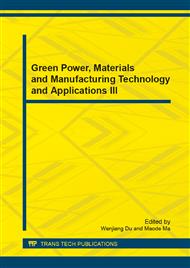[1]
Appeal, R. & Musket, P (1987) Language Contact and Bilingualism. London: Edward Arnold 1(3): 112-114.
Google Scholar
[2]
Auer, P (1984) Bilingual Conversation. Amsterdam: Benjamin's 2(4): 231-234.
Google Scholar
[3]
Auer, P (1998) Code-switching in Conversation: Language, Interaction and Identity. London: Rout ledge 3(4): 54-58.
Google Scholar
[4]
Azuma, S (1998) Meaning and Form in Code-switching. In Rodolfo Jacobson (Eds. ). Code switching Worldwide. Berlin, New York: Mouton de Grunter 4(6): 87-89.
Google Scholar
[5]
Blackmore, S (1999) the Meme Machine. London: Oxford University Press 5(6): 365-368.
Google Scholar
[6]
Clyde, M (1991) Community Languages: The Australian Experience. Cambridge: Cambridge University Press 6(8): 451-454.
Google Scholar
[7]
David, C (2001) Language and the Internet. Cambridge: Cambridge Press 7(5): 371-374.
Google Scholar
[8]
Gafaranga, J (2002) & Torras, M.C. Interactional Otherness, Toward a Redefinition of Code-switching: Cross-Linguistic Studies of Language Behavior. Kingston Press: London. 8(2): 432-434.
Google Scholar
[9]
Giles, H & St (1979) Clair, R. Language and Social Psychology . Oxford: OUP 9(4): 511-515.
Google Scholar
[10]
Gumperz, J. J (1982) Discourse Strategies. Cambridge, New York, New Rochelle, Melbourne, and Sydney: Cambridge University Press 10(3): 564-568.
Google Scholar
[11]
Herring, S. C (2008) Digital Media . In P. Hogan (eds. ), The Cambridge Encyclopedia of the Language Sciences. Cambridge University Press 11(5): 594-597.
Google Scholar
[12]
Herring, S. C (1996) Computer-Mediated Communication: Linguistic, Social, and Cross-Cultural Perspectives. Amsterdam, John Benjamin's 12(5): 611-614.
Google Scholar
[13]
Herring, S. C (2008) Web Content Analysis: Expanding the Paradigm. In J. Hun singer, M. Allen, & L. Klastrup (eds. ), The International Handbook of Internet Research. Springer Verlag 13(5): 653-657.
Google Scholar
[14]
Hoffman, C (1991) an introduction to Bilingualism. Lon & New York: Longman Group UK Ltd 14(3): 711-715.
Google Scholar
[15]
Jacobson, R (1977) The Social Implications of Intra-sentential Code-switching. In Am state, Joe-Lucia Ellias-Oliverres (eds. ), Spanish in the United States: Sociolinguistic Aspect. Cambridge: CUP 15(5): 741-746.
Google Scholar
[16]
Li, David (1996) Issues in Bilingualism and Biculturalism: A Hong Kong Case Study. New York: Peter Lang 16(7): 784-789.
Google Scholar
[17]
Scannell, Thomas V., Melnyk, Steven A. and Calantone, Roger J. (2011).
Google Scholar
[18]
Gao, QiXun, Feng Qianqian (2010).
Google Scholar


